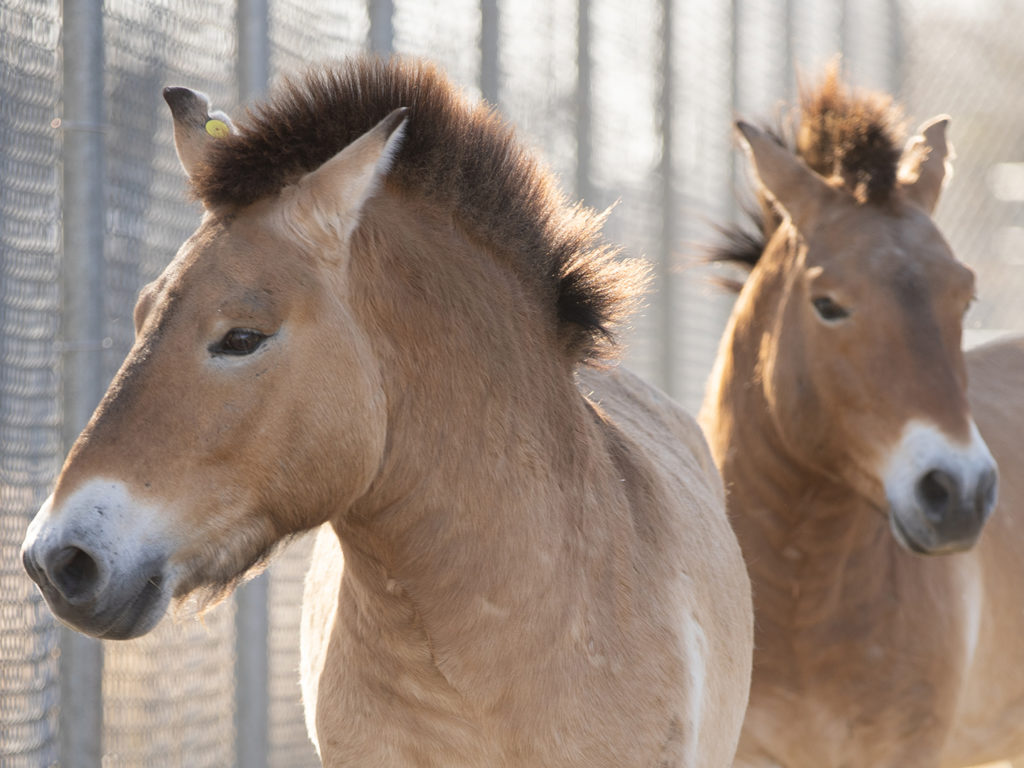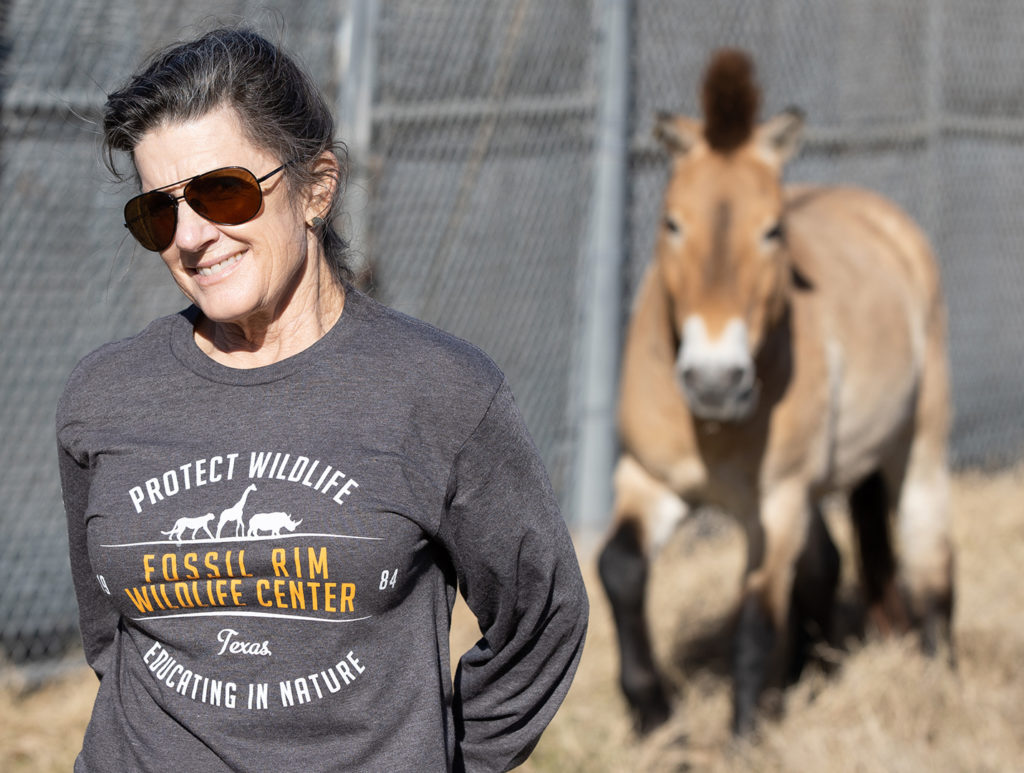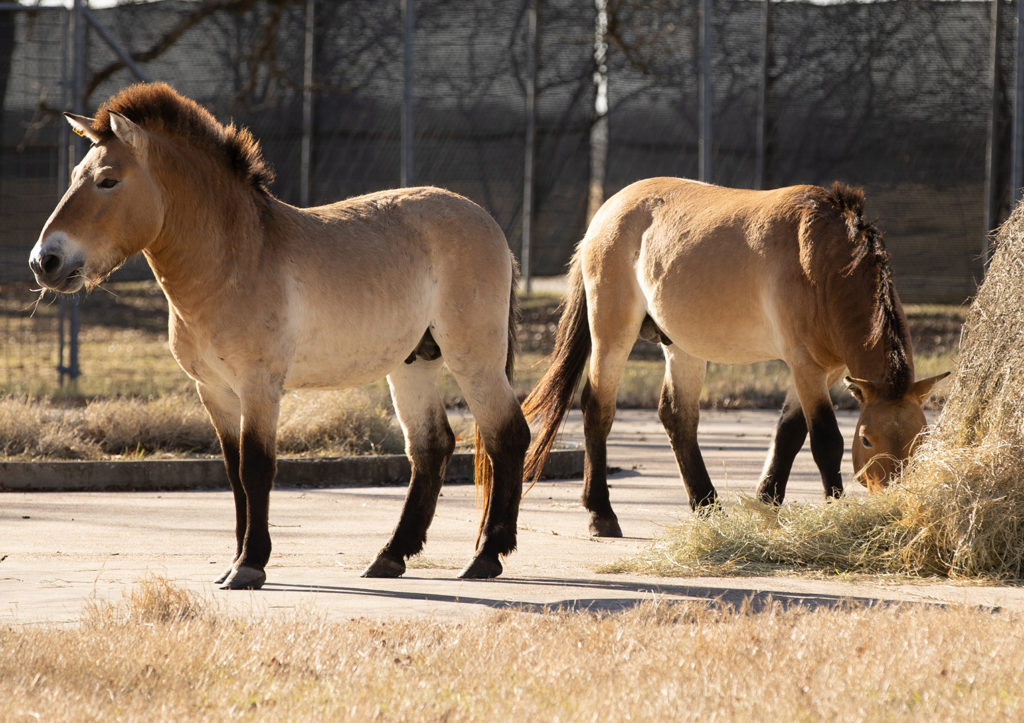Endangered Przewalski’s Horses Join Texas A&M Wildlife Center
Story by Megan Myers, CVMBS Communications

The Texas A&M College of Veterinary Medicine & Biomedical Sciences’ (CVMBS) Winnie Carter Wildlife Center (WCWC) is the new home for two Przewalski’s horses (P horses), a critically endangered species from Mongolia that is considered to be the last truly wild horse in existence.
At the WCWC, the P horses will help teach veterinary and undergraduate students about exotic animal care and the importance of species conservation.
Przewalski’s horses nearly became extinct in the wild in 1969, leading conservation scientists around the world to begin breeding programs of captive P horses in the hope of saving the species. The captive-bred individuals were reintroduced to the wild in the 1990s and, today, several healthy herds can be seen roaming the steppes of central Asia.
Captive breeding still continues, however, to maintain a diverse gene pool in the species, with the P horse’s Species Survival Plan—created by the Association of Zoos and Aquariums—determining which individuals remain in the breeding program. Those that don’t stay in the program go on to find homes at safari parks and wildlife centers across the United States.
This is how the WCWC’s director Dr. Alice Blue-McLendon learned about the opportunity to bring a pair of P horses to Texas A&M; she was contacted in December 2020 about providing a home for two males, Dash and Tegus.
The 8- and 9-year-old P horses were born at San Diego Safari Park and, because their genetics were already well-represented in the park’s P horse population, they were sent to Fossil Rim Wildlife Center in Glen Rose, Texas.

Fossil Rim’s director of animal care Adam Eyres knew the P horses would find the perfect home at Texas A&M, where they could live an easy life while providing a unique educational opportunity for students. He called his good friend Blue-McLendon, who was happy to take the P horses in.
“One of the big opportunities the P horses provide is helping students understand conservation and educating them about things like the Species Survival Plan and how that helps ensure that animals with very limited numbers maintain a good gene pool as they’re reintroduced to the wild,” Blue-McLendon said.
“It’s important to preserve species because the planet is a very diverse place with lots of different animals, plants, and insects,” she said. “As humans, we don’t always tread gently on this planet, and it’s important that we preserve the diversity of plant and animal life for future generations.”
In addition to providing a real-life example of the benefits of species conservation, the P horses will give students the opportunity to care for a wild equid species in captivity and learn the similarities and differences between them and domestic horses.
“The P horses’ care is very similar to a domesticated horse’s, but we’ll probably never be able to pet them,” Blue-McLendon said. “They’ll need to be routinely vaccinated and they’ll need hoof trims one to two times a year. We will probably work on training them to make it easier to perform veterinary procedures.”
Though the P horses were raised in captivity, they had little direct contact with humans and maintain the shy personality they share with their wild cousins.

Dash and Tegus will live in a private, two-acre pasture until their quarantine period ends, after which they may move to a shared space with other herbivores. The WCWC is also home to a female zebra that provides similar learning opportunities for students, but these species will never be kept together because of the possibility of interbreeding.
“In general, these animals are going to provide additional experience for our undergraduate and veterinary students to be able to work with non-domesticated equids,” Blue McLendon said. “There are only seven different species in the equine family, one of which is the domestic horse, so having a zebra and these P horses provides additional teaching opportunities. For example, we’ve already planned to do a hoof trim in April on one of the P horses for our third-year veterinary student elective.”
As the P horses settle into their new home, Blue-McLendon and the others at the WCWC are looking forward to seeing their personalities emerge.
“Dash and Tegus are delightful and very entertaining to watch,” she said. “They’ve been together their whole lives and they are very bonded.
“We’ve been working with them very intensely and they’re already comfortable coming close to people to get their grain and treats,” she said. “Because of their daily interaction with lots of students and staff, they’re already becoming a little bit more approachable than I expected, which is fantastic.”
###
For more information about the Texas A&M College of Veterinary Medicine & Biomedical Sciences, please visit our website at vetmed.tamu.edu or join us on Facebook, Instagram, and Twitter.
Contact Information: Jennifer Gauntt, Director of VMBS Communications, Texas A&M College of Veterinary Medicine & Biomedical Sciences, jgauntt@cvm.tamu.edu, 979-862-4216


